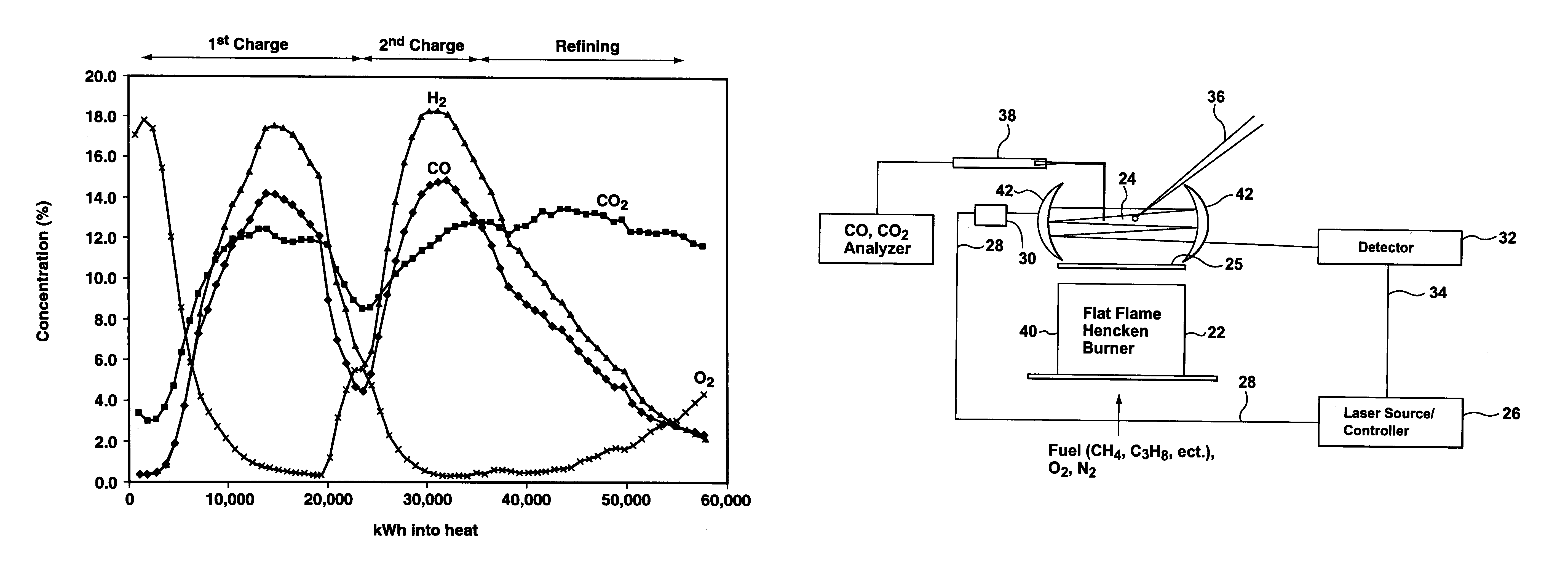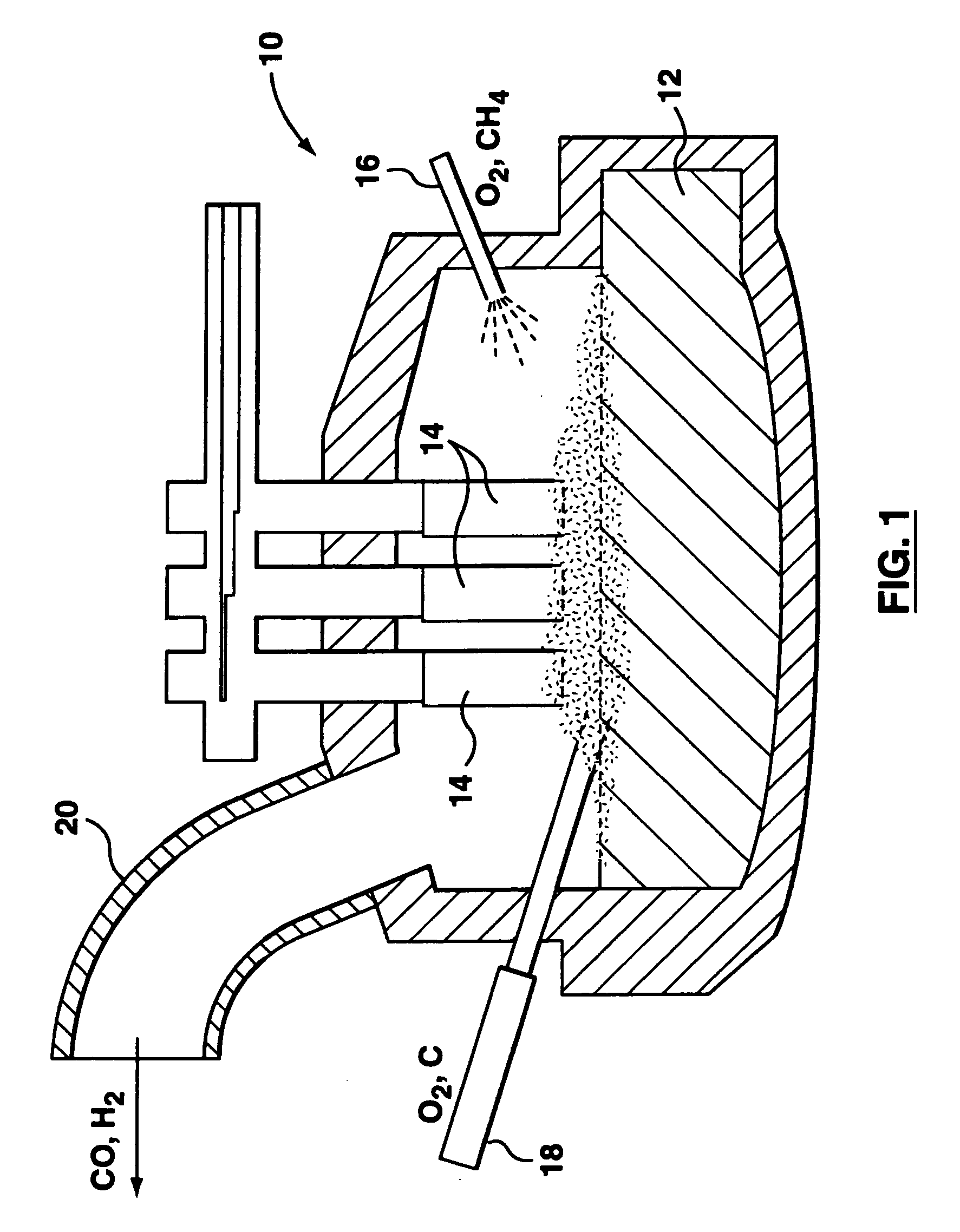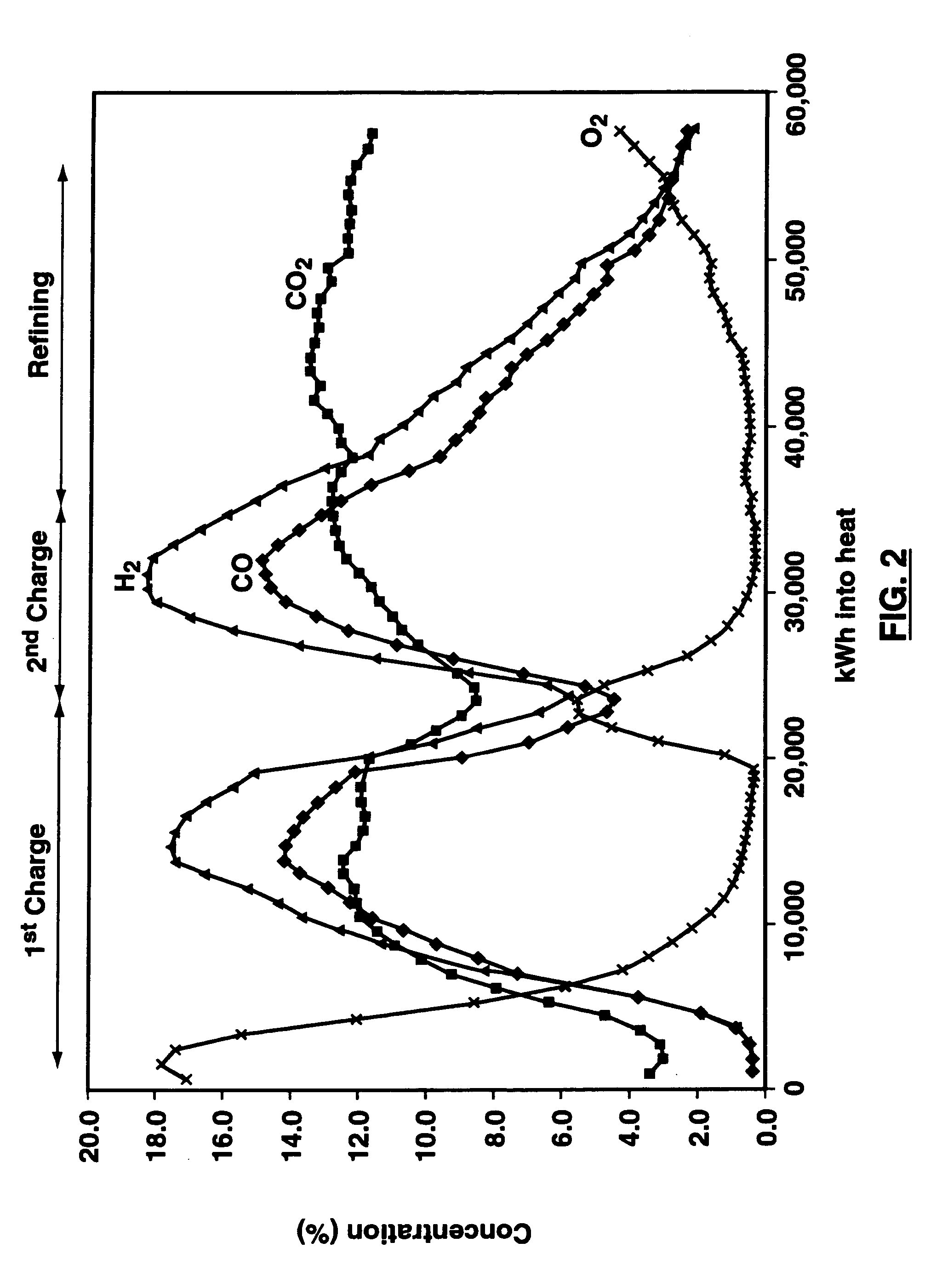Method and apparatus for improved process control in combustion applications
a technology of process control and combustion application, which is applied in the direction of non-combustible gases/liquid supply, optical radiation measurement, blast furnace, etc., can solve the problems of affecting the design and operation of the air pollution control system, and affecting the safety of users
- Summary
- Abstract
- Description
- Claims
- Application Information
AI Technical Summary
Benefits of technology
Problems solved by technology
Method used
Image
Examples
example
[0063]From the above analysis the preferred embodiment will be described using a near-IR DFB TDL as a process sensor for use with EAFs. For a better understanding of the present invention and to show more clearly how it would be carried into effect, the following illustrative example is provided. The example is in the form of an experiment and methodology used to select the near-IR TDL laser. Available modelling tools and research was used to assist in the selection of a promising laser diode material for the wavelengths of interest to combustion applications. For example, the U.S. Air Force provides atmospheric modelling programs (known as HITRAN and HITEMP) that can be used to 5 select an optimum wavelength region of the species of interest for combustion applications, such as CO and H2O. In particular, HITEMP modelling is available for CO, CO2, and H2O, whereas HITRAN modelling has a much wider selection but for complex molecules is only accurate at low temperatures. Unfortunatel...
PUM
| Property | Measurement | Unit |
|---|---|---|
| wavelength | aaaaa | aaaaa |
| wavelength | aaaaa | aaaaa |
| wavelength | aaaaa | aaaaa |
Abstract
Description
Claims
Application Information
 Login to View More
Login to View More - R&D
- Intellectual Property
- Life Sciences
- Materials
- Tech Scout
- Unparalleled Data Quality
- Higher Quality Content
- 60% Fewer Hallucinations
Browse by: Latest US Patents, China's latest patents, Technical Efficacy Thesaurus, Application Domain, Technology Topic, Popular Technical Reports.
© 2025 PatSnap. All rights reserved.Legal|Privacy policy|Modern Slavery Act Transparency Statement|Sitemap|About US| Contact US: help@patsnap.com



